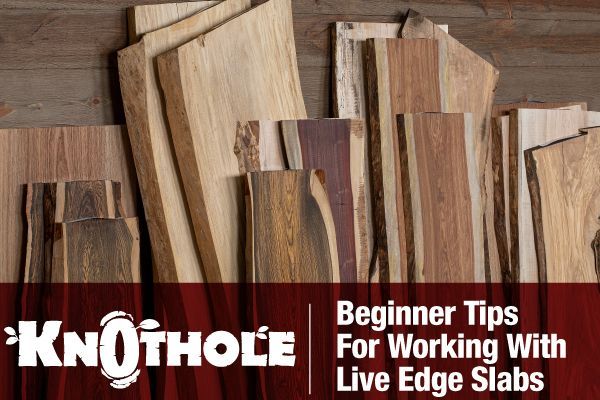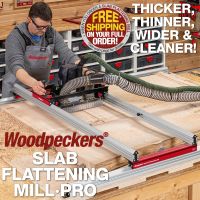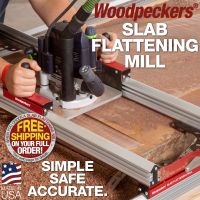Thank you to our friends at KJP Select Hardwoods for providing this article.
In the world of woodworking, it seems that everyone has fallen head over heels for live edge slabs. You see these pieces of wood everywhere these days. From coffee tables to floating shelves, there are all sorts of ways to utilize live edge slabs in your home decor.
As beautiful as this wood is, it poses unique challenges when you’re working with it. If you’re starting a project with live edge slabs for the first time, take note of these tips for beginners:
Selecting A Live Edge Slab
When you compare a live edge slab to a traditional piece of wood, the first thing you’ll notice is that the edges aren’t finished. Instead of perfectly right angles, they retain the original grooves and edges of the tree they came from.
Qualities that had originally been seen as flaws are part of what makes a live edge slab so alluring, from its curvy edges to its unfinished surface. No two pieces are exactly the same; take a closer look, and you’ll notice variations with the grain patterns, knots, burls, and corners of each piece of wood.
If you want to make less work for yourself, you can purchase a slab that’s pre-dried and pre-cut. We recommend sticking with kiln-dried slabs for indoor pieces of furniture.
Preparing The Slab
When you’re filling voids, you have the choice between blending them with the rest of the slab or emphasizing them with a different color.
Wondering how to apply EcoPoxy? This material is available in clear, metallic, or colored resins; it is low odor and long-lasting. Start by taping one side of the void to seal it shut (if you’d like, you can tape the edges of the void, too). Then, slowly pour your mixed EcoPoxy into the opening.
Allow up to 72 hours for the EcoPoxy to dry completely. You can use a smoothing tool to level the epoxy so it’s aligned with the surface of the wood.
Leave The Bark Or Remove It?
This choice is purely a stylistic one. Some prefer the smooth edges that result when you remove the bark, while others prefer the natural look and keep it on.
However, if you leave the bark on, it may flake off over time. The edges of a table, which are bumped frequently, may be best without the bark. Maintaining and cleaning the bark can be tricky. If you decide to remove it, we suggest using a rounded chisel and gently peeling it off. Follow it up by sanding the edges for a smooth finish.
How Much Should You Sand The Surface?
Depending on how you plan to use the live edge slab, you might need a completely flat surface. Think about a dining room table—if the surface is uneven, you’ll be knocking over glasses and plates when you sit down for a meal. It might be difficult to write on a desk that has a groovy surface.
In these cases, you’ll need to sand the surface until it’s smooth and flat. Start with coarse sandpaper to remove more material, and finish off with an extra-fine one.
But if you want to maintain the original character of the wood, you might hardly want to sand it at all. Raised edges and uneven grooves are part of what makes live edge slabs so unique. You’ll need to consider what you plan to use the wood for to determine how much to sand it.
Choosing The Right Finish
After all the work you’ve put in, you want to make sure that your project lasts for years to come. A finish plays an important role in preserving your live edge slab. You have a few different options:
- Shellac. A mix of shellac and lacquer gives your table a glossy finish, which looks stunning for a centerpiece table.
- Polyurethane. This gives the wood a simple, clean coating that enhances its resistance to scratches and water damage.
- Wood oil. Try one of these coatings to emphasize the natural grain of the wood. It gives the live edge slab a natural matte finish.
Before applying any finish, make sure the wood is clean. Use a vacuum to remove any remaining sawdust.
Even though you might be excited to put your new slab to use, be sure to wait several days for the finish to cure. Otherwise, you’ll mark up all your hard work!
You can create some truly stunning pieces with live edge slabs. Use them as barn doors, countertops, or coffee tables. They add rustic charm to any home. Keep these beginner tips in mind so your project gets off to the right start.
Written by: Kayla Russell is part of the marketing team at KJP Select Hardwoods, your Canadian source for wood and woodworking products.



